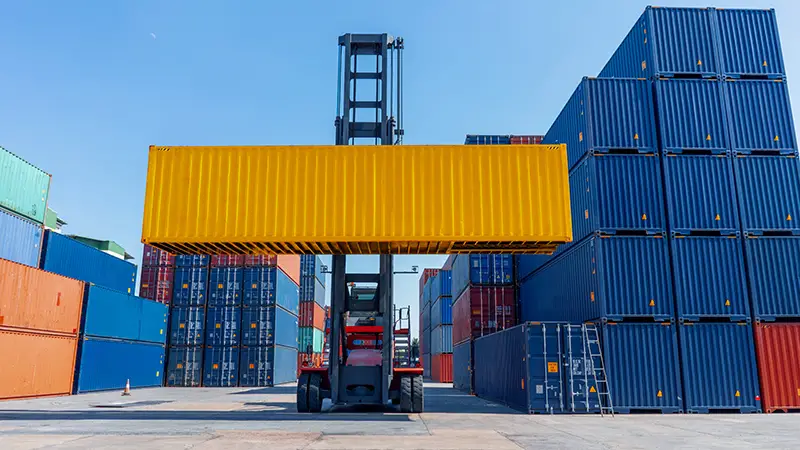Click here to get this post in PDF
Meeting modern delivery expectations requires coordinating a lot of moving parts. Once an item is sold, it requires the services provided by several logistics partners before it can end up in the hands of the purchaser. If any phase of the process is mishandled, it can cause a ripple effect that ends in a frustrated consumer. A recent study found that 85 percent of consumers will not continue to shop with a retailer if they have a bad delivery experience.
“The biggest challenge we face in the logistics chain typically involves the handoff,” says Ray Rosel, Business Growth and Operations Sales Leader for Senpex Technologies. “It doesn’t matter if it’s coming from the end-user or another logistics partner; managing the exchange is a crucial component of operational management for those involved in logistics. As a company, we work to develop seamless methods to alleviate problems with handoffs. Whether it involves offering API integration or guiding partners with manual instructions, the key is establishing an effective dialogue so that no one drops the ball.”
Rosel has spent more than two decades refining their management skills in the sales space, primarily in the technology industry. At Senpex, Rosel leverages innovative logistics strategies and cutting-edge technology to provide first-in-class last-mile logistics services. Senpex serves businesses in all 50 US states, using AI-driven automations to ensure delivery services are reliable, affordable, and effective for meeting consumer demands.
Understanding the critical challenges of last-mile logistics
Last-mile delivery, which represents the final phase in a product’s journey from marketplace to consumer, is costly and complicated. Some consider it the most expensive component in the delivery framework, accounting for as much as 53 percent of delivery costs.
The complexity of last-mile logistics has grown as consumers have become more interested in delivery transparency. Once an item is purchased, consumers want to know at all times where their order is in the delivery process. A recent study found that 91 percent of consumers actively track packages, with 19 percent checking delivery status multiple times daily.
Taking steps to ensure delivery success
One key to successful last-mile logistics is route optimization. Today’s logistics companies invest heavily in technology solutions that ensure routes are optimized to reduce time on the road and fuel costs. By leveraging AI and mobile technology, delivery drivers can access dynamic updates that guide them around emerging traffic issues.
“Route optimization is one of the delivery best practices logistics companies rely heavily upon,” Rosel says. “Route optimization not only helps drivers minimize time on the road but also ensures drivers meet the service-level agreements logistics companies have with their customers. When you add real-time tracking to the process, customers gain additional confidence their packages are being delivered properly and on time.”
Multi-route optimization is another practice utilized in the last-mile delivery space to increase efficiency. Whereas basic optimization involves developing the most efficient route between the pick-up and delivery points, multi-route optimization maximizes efficiency in scenarios where multiple deliveries are acquired at one pick-up point. In those cases, operational management practices determine the best groupings for deliveries based on their ultimate delivery point.
The proliferation of e-commerce businesses has created a number of situations requiring multi-route optimization. In some cases, serving e-commerce clients involves collecting items from various warehouses and delivering them to multiple customers. This many-to-many delivery model relies heavily on intelligent, AI-driven dynamic platforms for route optimization.
Utilizing technology to enhance logistical efficiency
Technology plays a central role in empowering enhanced efficiency in last-mile logistics. AI-driven platforms provide the data analytics and dynamic updates that drive route optimization. Technology applications also offer a wide variety of automations that streamline the process of receiving, organizing, and documenting order delivery.
“The tools technology provides for last-mile logistics are invaluable,” Rosel shares. “They allow companies to communicate better, resolve issues more quickly, and adapt as new requirements or opportunities arise.”
Autonomous vehicles are an emerging technology that promises to increase efficiency in the last-mile logistics space. By doing away with the need for drivers, autonomous vehicles provide businesses with a delivery option that is always available, more cost-effective, and not affected by the types of distractions that limit a human driver’s performance. Autonomous vehicles also create opportunities to utilize alternative delivery routes, such as sidewalks and bike paths, that avoid traffic congestion.
When mismanaged, last-mile logistics drive up costs while driving down revenue. When handled properly, it increases customer loyalty and profitability, giving a business a competitive edge.
“Every company should have two key objectives regarding last-mile logistics,” Rosel says. “Packages must be delivered properly, and those providing delivery must provide great service. Businesses that achieve those two core competencies with efficiency will be able to meet their business objectives.”
You may also like:
Leveraging Automation for Enhanced Order Fulfillment: The Smart Way to Scale Your Own Business
Why Liftgates Are a Game-Changer for Small Business Logistics
The Logistics of Business Relocation: A Comprehensive Approach
Image source: elements.envato.com

